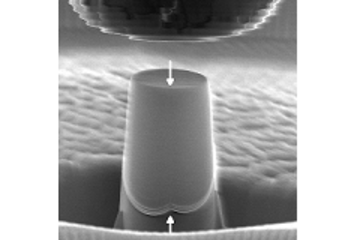All genres
461.
Talk
Predicting atomic structure and chemical reactions at solid-liquid interfaces by first principles. Operando surface science – Atomistic insights into electrified solid/liquid interfaces (708. WE-Heraeus-Seminar), Physikzentrum, Bad Honnef, Germany (2019)
462.
Talk
Machine Learning in Materials: Screening and Discovery. National Institute of Advanced Industrial Science and Technology (AIST), Tsukuba, Japan (2019)
463.
Talk
Metastability High Entropy Alloy Design. MRS Fall Conference, Boston, MA, USA (2019)
464.
Talk
Ab initio descriptors to design materials with superior mechanical properties. Materials Day, ETH Zürich, Zürich, Switzerland (2019)
465.
Talk
How do grain boundaries transform on the atomic level? International Workshop on Advanced and In-situ Microscopies of Functional Nanomaterials and Devices, IAMNano 2019, Düsseldorf, Germany (2019)
466.
Talk
Interstitial alloying and stacking-fault energies in CrMnFeCoNi. 3rd German-Dutch Workshop on “Computational Materials Science” , Domburg, The Netherlands (2019)
467.
Talk
Chemistry at Lattice Defects Probed at Atomic Scale. 20th International Union of Materials Research Societies International Conference in Asia IUMRS, Perth, Australia (2019)
468.
Talk
Tuning stacking-fault energies and local lattice distortions in high-entropy alloys. Theory of Complex Disorder in Materials (TCDM2019) , Linköping, Sweden (2019)
469.
Talk
Ab initio description of coupling phenomena between magnetic and structural degrees of freedom. EASTMAG2019 – VII Euro-Asian Symposium “Trends in Magnetism”, Jekaterinburg, Russia (2019)
470.
Talk
Ab initio simulation of finite temperature phase stabilities: Concepts and application. HetSys Launch Event, Warwick, UK (2019)
471.
Talk
Phase stability and mechanical properties of high entropy and chemically complex alloys. MS&T Annual Meeting, Portland, OR, USA (2019)
472.
Talk
Ab initio guided materials design and discovery. Inaugural Symposium for Computational Materials, Moscow-Skoltech, Russia (2019)
473.
Talk
Metastable High Entropy Alloys. World Congress on High Entropy Alloys, Seattle, WA, USA (2019)
474.
Talk
Atomistic investigation of stacking faults in non-stoichiometric Fe–Nb Alloys. EUROMAT 2019, Stockholm, Sweden (2019)
475.
Talk
First-principles appraoch to model electrochemical reactions at solid-liquid interfaces. ACS 2019 Fall Meeting & Exhibition, San Diego, CA, USA (2019)
476.
Talk
Degradation processes at surfaces and interfaces. ISAM4: The fourth International Symposium on Atomistic and Multiscale Modeling of Mechanics and Multiphysics, Friedrich-Alexander Universität Erlangen-Nürnberg (FAU), Erlangen, Germany (2019)
477.
Talk
Ab initio input for multiphysics models: Accuracy, performance and challenges. ISAM4: The fourth International Symposium on Atomistic and Multiscale Modeling of Mechanics and Multiphysics, Erlangen, Germany (2019)
478.
Talk
Machine Learning in Materials: Screening and Discovery. Gordon Research Conference Physical Metallurgy „Coupling Computation, Data Science and Experiments in Physical Metallurgy“, Manchester, NH, USA (2019)
479.
Talk
Ab initio approach to electrochemisty and corrosion. Computational Materials Chemistry Workshop, Telluride, CO, USA (2019)
480.
Talk
Precipitate-induced nonlinearities of solute diffusion in Al-based alloys. 15th Diffusion in Solids and Liquids (DSL) Conference, Athens, Greece (2019)











